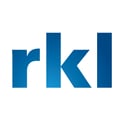Prepare Now for Smoother Year-End Adoption
The highly anticipated new lease accounting standard will take effect for most private companies at the end of 2022 (fiscal years beginning after December 15, 2021), six years and two adoption deferrals after its introduction. The standard requires companies following generally accepted accounting principles, or GAAP, for their financial statements to bring long-term lease obligations onto their balance sheets. Public companies already adopted this accounting standard update in 2019, and private companies must follow suit this year. Read more about the new standard, how it differs from prior accounting rules and other considerations for private companies.
The new lease standard is an unprecedented accounting change that requires a great deal of research, evaluation and groundwork. It is critical that affected companies invest the time and prepare for adoption throughout 2022 to avoid a last-minute rush or incomplete adoption when preparing year-end financials. Here are some tips and best practices for companies to comply with the new standard and stay aligned with their assurance partner.
GET READY FOR NEW LEASE ACCOUNTING RULES
-
Find and summarize leases: The new rules require reporting for all leases and extensive disclosures, so a critical first step is to gather a complete inventory of all of your company’s leases. It is also important to obtain all lease documents, including the original lease and all amendments and modifications, to ensure the accurate version of the lease is adopted.
-
Extract required data: Once the lease inventory is created, companies will have to review each lease and identify the data needed for reporting and adoption of the standard. It is critical at this point to identify any embedded leases that companies may be unaware of, which may not have mattered under prior accounting standards.
-
Decide whether to apply practical expedients: Under the new standard, companies may elect to apply three practical expedients and receive relief from requirements. The three expedients are related to the option to combine lease and non-lease components, determining the discount rate used on liabilities and the transition date of the lease accounting. These expedients are all or none, so companies must work with their accountant to apply all three or revisit prior determinations for every lease and contract. It is well worth a company’s time to adopt the package of expedients now to avoid retroactive assessment of lease classification.
-
Assess options that may factor into accounting: The new rules contain a number of options that may or may not apply to a company and its leases. Conditions like variable payments or purchase, renewal and termination options can factor into the accounting, so companies must be aware of them before implementation.
Successful adoption of the new lease accounting rules will be challenging, time-consuming and complex and require a high level of detailed preparation, but you don’t have to go it alone. RKL’s team of assurance advisors is ready to help with a software solution to streamline adoption and aggregate data related to your company’s leases, including the required journal entries and disclosures. Contact RKL LLP to learn more.




